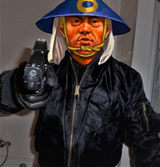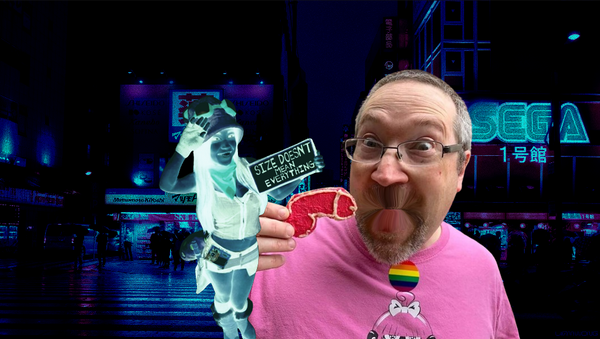A Guide To Japanese Samurai Weapons

From the legendary katana, to the yari spear and naginata blade, to the seemingly endless varieties of bows, arrows and hand-held weapons; these are just a few of the many types of gear and samurai weapons used in feudal Japan.
For much of Japan’s history, the country was a bloody battlefield wracked by the wars of clans competing for military and economic power. The greatest tools at the disposal of a daimyo (noble lord and clan chieftain) were his samurai: knights of old Japan who were feared and respected in equal measure. But what tools did these warriors themselves have at their disposal to carry out the will of their masters, and to keep their own heads while doing so?
The answer is a lot! The warfare which characterized medieval Japan from the Heian period (794–1185) up until the Edo period (1600 - 1868) gave rise to a wide array of gear used to kill, maim, or otherwise inconvenience the foot soldiers and samurai of enemy clans.
Daishō: the signature pair of swords

Katana
These iconic swords need no introduction for fans of the samurai films of Kurosawa, or any number of other pop culture pieces in which they feature. The katana style of blade was developed in the late 12th century — a descendant of an earlier sword known as a tachi which was used by the very first samurai.
The katana is a type of longsword, wielded with two hands. Although these are the most iconic weapon of the samurai, they weren’t always the go-to choice. In fact, in open warfare, spears and bows were often much more effective. There are two main reasons we associate the katana with these warriors so closely. The first is because they were the weapon of choice for the Edo period 1-on-1 honor duels between samurai which look so damn good on film. The second is that these swords held a special place as symbols of status and wealth.
To prevent rebellions towards the end of the 16th century Oda Nobunaga, the first and most ruthless unifier of Japan, ordered that only samurai were permitted to carry bladed weapons. If a commoner were found with one, they would have it promptly confiscated (along with their hand or head). Due to this important social role of the katana, the swords were made as decorative as they were deadly.

The main parts of a katana are the 60-80cm blade, the oval hand-guard, the handle with a cord wrap around it, and the scabbard with a cloth cord tied around for hanging on the waist. The blade is slightly curved — a remnant from the days when swords were mostly used from horseback.
The smiths themselves were just as skilled — perhaps even more so — than the fighters they made weapons for. Japanese steel was actually surprisingly brittle due to excessive levels of carbon in the metal. This led to the development of an artisan smithing culture, with a high level of expertise needed to fortify the metal and make it battle-ready.
Blades were forged with strict temperature control, hammered flat, then folded — thousands of times. This gave the now-layered steel a beautiful wavy pattern while making it strong and flexible. Ironically, the comparative poorness of Japanese steel led to better quality blades than made in Europe.

The top blacksmiths in Japan became as legendary as the best of the samurai themselves. They would usually mark the blade with their signature, as well as adding ornate etchings of things such as flowers and dragons, known as horimono. For the most important customers, a blend of metals was used to ensure the flexibility and durability of the sword. This decreased the brittleness of the blade with a softer core, while the harder exterior metal made for an incredibly sharp and durable edge.
In keeping with the animism of Shinto, it was even believed that the swords of samurai had spirits of their own which needed to be appeased with victory (much like the egos of their owners). Shinto purification rituals prepared the enrobed smith for his task, as he was essentially acting as a priest to summon this spirit into the blade.
Wakizashi
The second blade which completes the daishō pair is the wakizashi: a 12-inch dagger used as a backup weapon, and for ritual suicide if a samurai were to disgrace themselves through defeat or surrender. This ritual suicide was known as seppuku, and it was an astonishingly common practice among the samurai class.

Warning: squeamish readers should skip the following part. The process of seppuku (also known as hari kari) was to first stab the wakizashi into the side of the stomach, twist the blade, then slice it across to the other side. To avoid a drawn-out death, a squire or fellow samurai would often behead the warrior after he completed those steps. Facing death like this allowed a samurai to maintain his all-important social status, even in the face of total disgrace, and the wakizashi was the tool he used to do it.
The practice even extended beyond disgrace and dishonor, and into the act of junshi: suicide after the death of the lord they served. Originally it was only carried out when the samurai failed to protect the lord from death in battle or murder, but it expanded to include natural causes and accidental death. The practice was outlawed in the 17th century due to the sheer number of good fighting men lost to it, with dozens following deceased daimyo to the grave.
Yumi: the unique Japanese longbow
Another weapon which no self-respecting samurai would be seen without, the bow and arrow was a key part of warfare in feudal Japan. Despite the popular image of the samurai as hand-to-hand foot-soldiers, much of their fighting was done from horseback, and from a distance. Samurai typically carried around three dozen arrows in their yebira (quiver) which they would often loose from horseback before getting up close.

Early samurai warfare was extremely ritualized, and the bow and arrow played an important part in the procedures of battlefield etiquette. When ready to enter the fray, a samurai would first announce their name and rank, then boast about past victories. After that, they would take their bow and fire off a whistling arrow to draw attention to themselves, and invite the challenge of anyone of similar rank. The ensuing duel usually consisted of a horseback archery contest, with swords only drawn if the samurai’s supply of arrows were exhausted.
Japanese longbows have a very distinctive style not found anywhere else in the world. The bows were made from a composite of bamboo (for flexibility) and wax tree (for strength), and a layer of lacquer to finish. The grip was located around a third of the way up the bow rather than in the center. This made it more convenient to use on horseback, and also allowed standing soldiers to use a bow up to eight feet long without the bottom touching the ground.
Great strength was needed to draw the string on these asymmetrical bows, and it was typically drawn and released from the thumb rather than the fingers. Due to the skill needed to wield these bows, a culture of rigorous training was developed according to Zen Buddhist principles.
The idea was that full sincerity and clear-sightedness in the approach to shooting preceded technical skill itself — the bow just being an inconvenient intermediary for the will of the shooter. In his story The Master, the 19th-century writer Atsushi Nakajima (who most Japanese people will remember from high school literature classes) writes about an old Chinese master who could shoot down a hawk with neither bow nor arrow in his hand!

Yari: the overlooked staple of Japanese battles
While beautifully decorated katana look good in action movies, their effectiveness was actually minimal on the crowded battlefields of Japan’s bloodiest eras. With thousands of soldiers surrounding you, and thousands more charging down the hill towards you, how are you gonna find the time or space to show off your sick sword moves?
For such an occasion, a more practical tool is in order: the yari. These spears could be anything from 15 to 21 feet long — perfect for attacking from horseback, or keeping charging enemies at bay. Just like bow and arrows, they were a much more prominent feature of Japanese warfare than swords, carried by both samurai and commoners. Never to be upstaged, the samurai differentiated their yari from the common varieties with inlays of precious metal and pearl.
In fact, the yari remained a battlefield favorite right up until the Edo period, when Japan entered a time of relative peace not seen for centuries. It was only then, when large-scale conflict became unnecessary, that the flashy katana became dominant as a weapon suited to the small conflicts and duels of that time.
The word yari actually refers to a wide range of polearm weapons developed over the years, all sharing some common characteristics. Each had a hardwood handle with a layer of lacquered bamboo, encircled by metal bands, with a metal pommel on the bottom and a straight, flat blade on top. They also had a very long tang (the part of the blade which extends into the handle) to prevent the blade from snapping off and turning the weapon into a very long, very pretty, but very useless stick — the last thing you need with a horde of angry clansmen swiping at you.
Karuta: the iconic Samurai Armor
Samurai armor has a distinctive and unmistakable style — in the world of historical warriors, the Japanese rule the catwalk. Japanese armor is thought to have originated from the Chinese and Korean styles, made of small iron plates of metal (commonly rectangular or hexagonal) bound together with rivets, leather straps, or braided silk dyed in the signature colors of the warrior’s clan.
The unique Japanese style came from the Heian period, when armorers began to use lacquer and leather to weatherproof the metals. There are many parts that make up a full set of samurai armor, but two pieces hold the most importance.
Dō (Cuirass)
The largest part of a samurai’s armor, this full-torso cuirass was made from plates of metal of varying size bound together into a full breastplate and backplate. More plates known as kusazuri were attached to the belt of the dō, hanging down to protect the thighs. The arms were protected by han kote gauntlets: silk sleeves covered in iron plates bound together with chainmail.

To further protect the legs, armor plates known as haidate hung from the waist underneath the skirt of the dō, and iron greaves called suneate were tied to the shins, not unlike modern soccer shinguards (although the samurai could take a hit far better than your average soccer pro).
In the 16th century, Portuguese traders introduced full plate mail to Japan, of the kind used by European knights, with bulletproof varieties even being developed. This revolutionized Japanese armor, rendering the bound-plate style obsolete. However, the relatively peaceful Edo period soon followed these innovations, meaning the full benefit was never really seen on the battlefield.
In this period, full armor became pretty much obsolete, only used for status and ceremony from then until the 20th century. However, lightweight body armor was still often worn under clothing to protect samurai from contemporary threats. You can think of the early Edo era a bit like the American Wild West: there weren’t many large-scale battles to worry about, but a fair amount of duels, assassinations, and banditry still posed a threat.
Kabuto (Helmet)
This helmet was one of the most important parts of the outfit — for both protection and vanity’s sake. They often had ornate tatemono golden crests attached to the forehead, signifying the samurai’s rank and clan — comparable to the feathery head crests attached to the helmets of European knights. The most iconic design is that said to have been inspired by the Japanese horned beetle.

Affixed to the bottom was the shikoro: a neck guard of plate metal that fanned out over the neck and shoulders, tied to the edge of the kabuto. Far and away the most intimidating part of the armor was the mengu — a face guard which was tied to the helmet, featuring any range of fearsome visages; from half masks with horrific grins, to fanged oni (Japanese demons), to normal human faces with intimidatingly lush horse-hair mustaches.
As well as marking out the warriors on the battlefield, these helmets acted as trophies which enemies would use to verify their kills when they took the head of a samurai in battle. Samurai even wore a special string bag on their waist to transport these gruesome trophies: the kubi bukuro (head bag).
Tanegashima: Guns
Yes, you read correctly: the samurai used guns! Hardly the heroic image of honorable swordsman we’re used to, right? Nonetheless, if you need to win a battle, gunpowder will get you much further than a sharp blade and a strict code of honor.

It’s said that the Ashikaga shogun first saw firearms used when watching Dutch traders hunting for ducks in 1543. He then bought a pair of arquebus matchlock rifles — relatively simple, single-shot guns, the kind often seen in pirate films — and set about having his engineers manufacture some copies. By 1575 they had become so widespread that Oda Nobunaga had 3000 guns at his disposal when he wiped out his rival at the battle of Nagashino, the decisive victory in his conquest of the nation. Seeing noble samurai cut down so easily by anyone with two hands to hold a gun, it was clear that these new tools were the weapons of the future.
At the turn of the 17th century and the dawn of the Edo period, Tokugawa Ieyasu completed the unification process and placed strict regulations on gun manufacturing to ensure he couldn’t be challenged for his position. However, the lessons of Nagashino weren’t easily forgotten, so every samurai still implemented gun drills as a key part of their training and hunting.
Torimono Sandōgu: the three weapons of arrest
When a time of great peace comes, what’s the warrior class to do? They could hardly be content to just hang up their weapons and settle down for a life of farming and tea sipping. Instead, when the Edo period brought relative stability to Japan, the samurai used their skills to become law enforcers — members of a new police force established by the Tokugawa shogunate.
Despite enjoying the security of relative stability, the commoner population now also had to endure strict regulations interfering with every aspect of life, from travel between cities to the paying of taxes. If anyone fell foul of these strict new laws, they might find themselves on the receiving end of these non-deadly (yet super painful) capture tools.

The torimono sandōgu was a set of three tools affixed to the end of six-foot hardwood staffs so officers could stay a safe distance from their targets. They also all had sharp barbs of various shapes attached to the upper shaft to cut the hands of anyone trying to wrest the pole from the samurai policeman's grip. Together these three weapons became symbols of the samurai police and were displayed in front of police checkpoints and stations.
Sasumata: the ‘spear fork’
This tool had a U-shaped blunt spearhead, perfectly sized for pinning the neck or limbs of a criminal to the floor or wall. Once pinned down in this fashion, escape was pretty much impossible. Anyone who has spent time teaching in Japanese or Chinese schools might find this implement familiar, as a modern version of the sasumata is still in use by school security guards in both countries.
Sodegarami: the ‘sleeve entangler’
This staff was perfect for bringing down a kimono-clad criminal, with a head that featured prongs with many small hooks, usually with triangular points. The pole would be thrust towards the target, then twisted to snag a good grip on their clothing, after which they could be easily thrown to the ground.
Tsukubō: the ‘push pole’
The simplest of the three arrest tools, the head of this staff was T-shaped and covered in small barbs. The name pretty much sums up how it was used: samurai police would shove people with it. When used in conjunction with the other instruments, entangled suspects could be easily pinned down. Some tsukubō even had a pair of weighted chains hanging from the end to ensnare the criminal’s arms or weapon.
Bonus Weapon: medieval mace
Amazingly, the samurai police even had their own version of pepper spray, the metsubushi. This was a small wooden box with a mouthpiece on one end and a pipe or hole on the other. The samurai would blow into the mouthpiece and send a cloud of nasty powder into the suspect’s eyes — which could include anything from actual pepper to dirt, or even ground glass!
The Wrap-up
So there you have it — the key components of a samurai warrior’s inventory across the ages. If you only knew about this warrior class through movies and TV, you might’ve had some myth-busting moments above. While for much of their history the samurai were skilled swordsmen following a strict code of honor, they also went through many other phases and iterations; from horseback archers, to riflemen, to historic FBI agents. The gear they used across the centuries remains as a reminder of just how fascinating, wealthy, and deadly these fearsome people really were.





